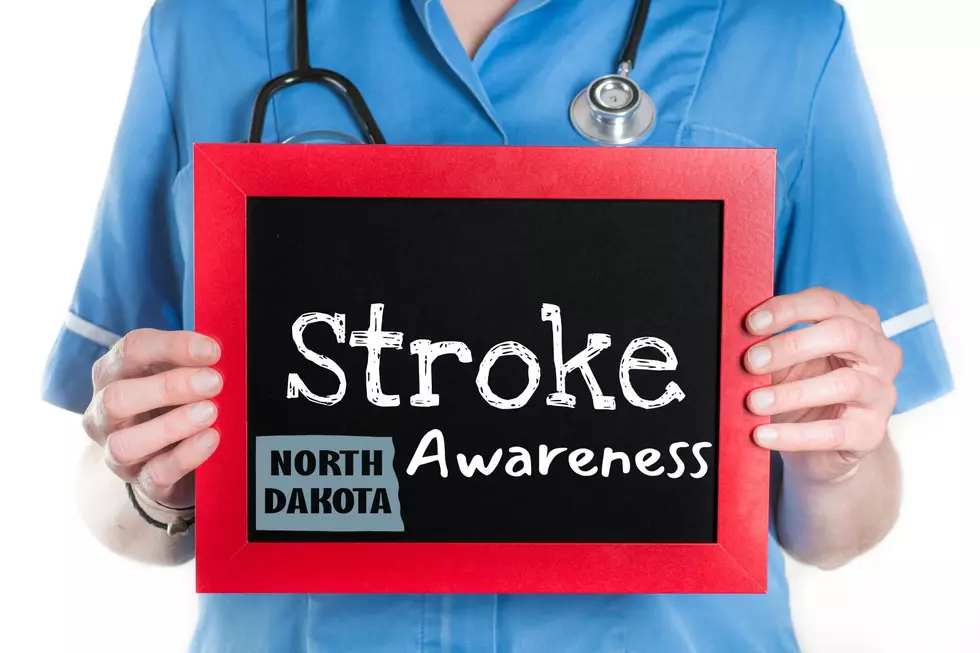
Raising Awareness: Preventing Stroke in North Dakota
Every 40 seconds, someone in the United States experiences a stroke, and shockingly, 1 in 4 stroke survivors will encounter another one.
These statistics are not just numbers; they represent real lives impacted by the devastating effects of strokes.
However, amidst this alarming reality, there is hope. May marks American Stroke Month, a time when the American Stroke Association, a division of the American Heart Association, is amplifying awareness nationwide about stroke prevention, treatment, and recovery.
In North Dakota, where communities thrive amidst the vast plains, understanding the importance of stroke awareness is crucial. Despite its quiet landscape, strokes can disrupt lives without warning.
So, here are three proactive steps every North Dakotan can take to beat stroke:
1. Learn to Spot a Stroke F.A.S.T.: Time is of the essence when it comes to stroke. Knowing the signs can save lives. Remember F.A.S.T. - Face drooping, Arm weakness, Speech difficulty, Time to call 911. If you notice any of these symptoms, don't hesitate to seek emergency medical assistance.
2. Monitor Your Blood Pressure: High blood pressure is a leading cause and a controllable risk factor for stroke. Regularly check your blood pressure and work with your healthcare provider to keep it within a healthy range. By managing your blood pressure, you significantly reduce your risk of experiencing a stroke.
3. Advocate for Prevention: If you've already experienced a stroke, take proactive steps to prevent another one. Talk to your doctor about managing risk factors and making lifestyle changes to reduce the likelihood of a second stroke. Be your own advocate for health and wellness.

Understanding Stroke: Importance of Early Identification and Risk Mitigation
A stroke occurs when blood flow to the brain is interrupted, leading to the death of brain cells. The quicker the identification and treatment, the better the chances of survival and recovery. Moreover, understanding the underlying causes of a stroke and identifying personal risk factors are essential in mitigating the risk of future occurrences.
Addressing Disparities: Stroke Risk Among Black and Hispanic Adults
While strokes can affect anyone, certain demographics face a higher burden. Black and Hispanic adults in the U.S. are particularly at risk due to unmanaged risk factors such as high blood pressure, obesity, and diabetes.
Empowering Prevention: Lifestyle Changes for Stroke Risk Reduction
However, education and lifestyle changes can significantly reduce the risk of the majority of strokes. By promoting physical activity, healthy eating habits, and managing conditions like atrial fibrillation and high blood pressure, individuals can take proactive steps towards stroke prevention.
This American Stroke Month, let's all be bold advocates for ourselves and our communities. Learn the signs of a stroke, prioritize discussions about stroke prevention with healthcare providers, and remember that a stroke is a medical emergency. If you suspect someone is having a stroke, act quickly by calling 911.
To deepen your understanding of stroke warning signs, consider engaging with the F.A.S.T. Experience, a digital series designed to educate individuals about recognizing stroke symptoms.
For more information and resources on stroke prevention, click here. Together, let's prevent strokes today, so we can enjoy a healthier tomorrow.
Ranking the States That Eat the Healthiest Food
Gallery Credit: Billy Jenkins
Health Benefits of Drinking Lemon Water
Gallery Credit: Leslie Morgan
More From KEYZ AM 660









